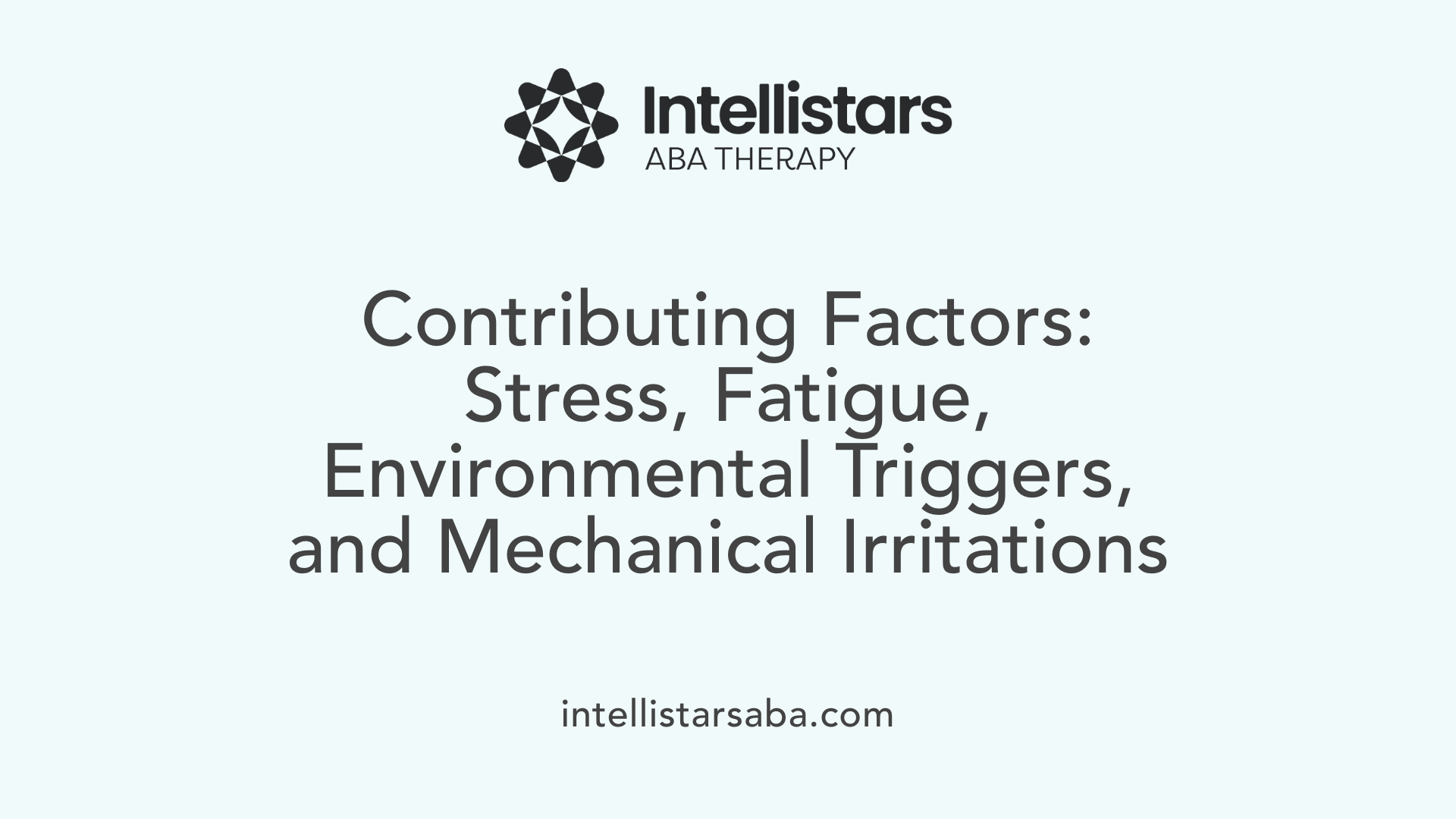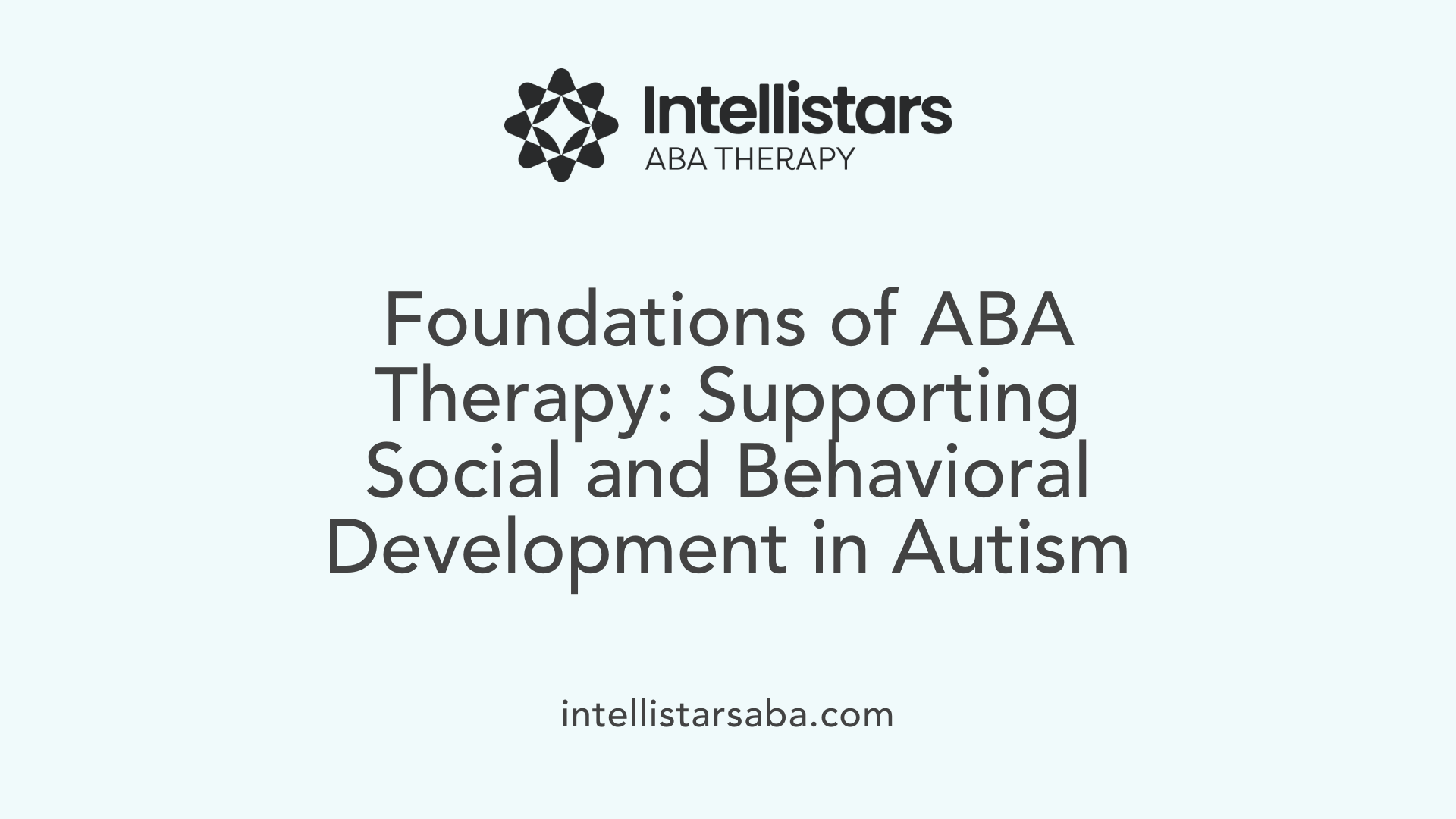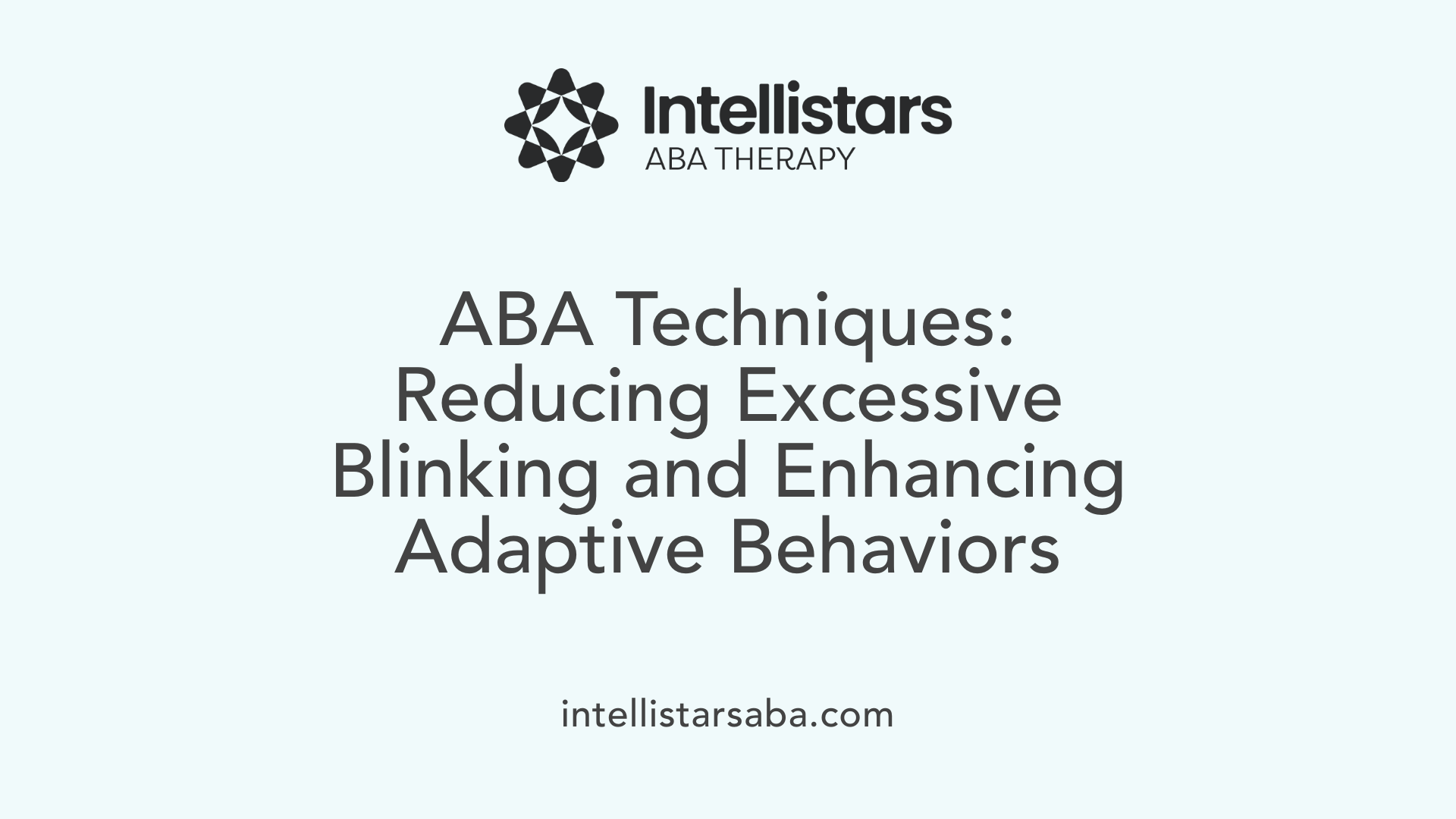A Closer Look at Excessive Blinking in Children with Autism
Excessive blinking in children on the autism spectrum can be both a noticeable behavior and a manifestation of deeper sensory or neurological processes. This article explores the causes, behavioral implications, and therapeutic interventions related to excessive blinking in autistic children, drawing on recent research findings and clinical observations to shed light on this frequently observed phenomenon.
The Role of Excessive Blinking in Autism Spectrum Disorder
What is excessive blinking in children with autism?
Excessive blinking in autistic children is characterized by more frequent blinking than typical. It can stem from various causes such as eye irritation, allergic conjunctivitis, refractive errors like myopia or hypermetropia, or behavioral factors including tics and stimming. Eye surface instability, notably reduced tear film breakup time, is often a contributing factor.
How does excessive blinking relate to stimming and tic disorders?
Excessive blinking may serve as a form of stimming—a repetitive, self-soothing behavior common in autism. Children might engage in blinking repetitively to manage sensory overload, anxiety, or excitement. Alternatively, it may manifest as a tic disorder, characterized by involuntary, sudden, repetitive movements or sounds. Both behaviors help regulate sensory input but stem from different neurological mechanisms.
How does excessive blinking differ from typical eye behavior?
Typically developing children inhibit blinking during engaging emotional or social scenes, using blink timing to maintain attention. Children with autism may exhibit different blink timing patterns, such as inhibiting blinks after actions instead of before, indicating alternative sensory processing. Excessive blinking contrasts with typical blink inhibition patterns and may reflect both sensory and behavioral regulation difficulties.
What sensory and behavioral functions does blinking serve in autism?
Blinking in autistic children may provide sensory regulation by dampening overwhelming stimuli or signaling internal states like anxiety. As a part of stimming, it helps manage emotions and sensory input, while as a tic, it can relate to neurobehavioral factors such as fatigue or stress. Understanding these functions supports tailored interventions that respect the child’s need for sensory regulation.
ABA (Applied Behavior Analysis) therapy addresses behavioral challenges like repetitive blinking by increasing adaptive behaviors and reducing problematic ones. It does so through personalized techniques that consider the function of the behavior, aiming to support the child’s well-being and social development.
Sensory Processing and Eye Blink Patterns in Children with Autism
How do researchers use eye blink timing to measure attention and engagement in children with autism?
Researchers studied 93 two-year-old toddlers, half diagnosed with autism spectrum disorder (ASD), by tracking their eye blink timings while watching videos of children playing. Eye blink inhibition—pausing blinks—is used as a marker of attention and engagement. Typically developing children showed blink inhibition especially during emotional and social scenes, such as facial expressions, indicating a focused attention on socially relevant stimuli.
What are the key differences in blink inhibition between autistic and typically developing children?
While typically developing toddlers inhibited blinking before and during social scenes, children with ASD demonstrated different patterns. They inhibited blinking more during physical and moving objects rather than social cues. Notably, children with ASD inhibited blinking after actions rather than before, unlike their peers. This shifted timing suggests differences in how they process and perceive stimuli.
How do children with autism differ in perception and processing of social versus physical stimuli?
Blink inhibition appears linked to how important a stimulus is perceived. Typically developing children attend more reflexively and prevent blinking during socially and emotionally meaningful moments. In contrast, children with ASD show heightened attention to physical rather than social stimuli, potentially reflecting altered sensory priorities or processing. The delayed blink inhibition relative to actions signals different cognitive or sensory integration pathways.
What implications do these findings have for understanding sensory processing in autism?
These insights suggest sensory processing in autism is distinct, with autistic children demonstrating unique engagement patterns through eye blink timing. Understanding these differences can guide therapeutic and behavioral strategies such as Applied Behavior Analysis (ABA). Tailoring interventions with awareness of atypical sensory engagement may improve social responsiveness and learning outcomes by aligning therapy with how autistic children perceive their environment.
| Topic | Detail | Importance |
|---|---|---|
| Eye Blink Timing | Measures attention and engagement in toddlers | Objective, non-invasive tool to study sensory processing |
| Blink Inhibition Patterns | ASD children blink after vs. before actions | Highlights distinct sensory processing and perception approaches |
| Social vs. Physical Stimuli | ASD focus on physical, typical kids on social stimuli | Indicates different priorities in processing stimuli |
| Therapeutic Implications | Insights inform personalized ABA therapy | Tailoring interventions improves engagement and social skills |
Physiological Causes of Excessive Blinking in Children
What are the ocular surface diseases that impact blinking in children?
Ocular surface diseases are prominent factors causing excessive blinking in children. These conditions, such as allergic conjunctivitis, lead to irritation and damage of the eye's surface, increasing blinking frequency as a protective response.
How does allergic conjunctivitis contribute to tear film instability and blinking?
Allergic conjunctivitis, often triggered by allergens like dust mites, inflames the conjunctiva and harms the corneal epithelium. This damage reduces tear film stability, measured by tear film breakup time (BUT), resulting in discomfort and excessive blinking.
What role do refractive errors play in excessive blinking?
Mild refractive errors, including hypermetropia (farsightedness) and myopia (nearsightedness), are associated with increased blinking. These vision issues strain the eyes, and correcting them with glasses often reduces blinking frequency.
How do mechanical irritants like conjunctival lithiasis or trichiasis affect blinking?
Mechanical irritants involve physical items or conditions, such as conjunctival lithiasis (small conjunctival concretions) or trichiasis (misdirected eyelashes), that irritate the eye surface. This irritation disrupts tear film stability and causes the child to blink excessively to alleviate the discomfort.
Behavioral and Environmental Contributors to Excessive Blinking

How do stress, fatigue, and tic disorders influence excessive blinking?
Excessive blinking in children can often be linked to behavioral causes such as stress and fatigue. These factors may trigger or exacerbate blinking tics—sudden, repetitive movements commonly seen around age 5, particularly in boys. Tic disorders are neurobehavioral conditions that may increase blinking frequency, and while many tics resolve naturally, persistent cases may require medical attention.
What are the effects of prolonged video display terminal (VDT) use on blinking?
Extended usage of screens, such as computers or tablets, is strongly associated with increased blinking frequency in children. Prolonged exposure to video display terminals reduces tear film stability, measured by shorter breakup times, leading to ocular surface irritation. Notably, time spent using VDTs correlates with a higher chance of developing myopia (nearsightedness), further contributing to ocular discomfort and blinking.
What is the role of sensory overload and understimulation in blinking behavior?
Children, especially those with autism spectrum disorder, often engage in repetitive behaviors known as stimming to manage sensory processing. Both sensory overload—where excessive stimuli overwhelm the child—and sensory understimulation—where insufficient sensory input leads to seeking additional stimuli—can influence blinking patterns. Blinking may act as a form of sensory regulation or a response to environmental demands.
How do environmental factors impact blinking frequency?
Environmental triggers such as allergens and physical irritants can increase blinking rates. For example, allergic conjunctivitis due to dust mites causes ocular surface damage and tear film instability, prompting frequent blinking. Similarly, mechanical irritations like eyelash malposition or foreign bodies in the eye contribute to discomfort and increased blink reflexes. Modifying the sensory environment and reducing overstimulation can help regulate blinking behavior in sensitive children.
Stimming and Tic Disorders: Differentiating Behaviors in Autism

What Are Stereotypies and Tics?
In autism, stereotypies (often called stimming) refer to rhythmic, repetitive movements or sounds—such as hand-flapping, rocking, or body twirling—that help individuals manage sensory input. Tics are sudden, repetitive, involuntary movements or sounds, like excessive blinking, facial grimacing, or throat clearing.
How Do These Behaviors Function?
Both stereotypies and tics are linked to sensory regulation and automatic reinforcement. They may provide soothing sensory feedback or help relieve anxiety. Stimming typically helps individuals manage overwhelming or understimulating environments, while tics can be more strongly associated with neurobehavioral factors and stress.
How Common Are These Behaviors?
Over 60% of individuals with autism exhibit stereotypic behaviors, with prevalence remaining consistent across different age groups. Tics are also present but tend to be more noticeable in boys and may vary in intensity.
How Are Excessive Blinking, Tics, and Stimming Related?
Excessive blinking can be a tic, particularly when related to neurobehavioral triggers, or a form of stereotypy when used as a self-stimulatory behavior. In autism, blinking may occur as a response to sensory needs or stress. Differentiating the cause is crucial for effective support.
Addressing These Behaviors in Autism Therapy
Applied Behavior Analysis (ABA) therapy targets behaviors like stereotypies and tics—including excessive blinking—through functional assessment to identify their purpose. Personalized interventions focus on teaching replacement behaviors, adjusting the environment, and respecting sensory needs. This approach supports the individual's autonomy while promoting social and behavioral skills.
Applied Behavior Analysis (ABA) Therapy: Foundations and Support for Autism

What is Applied Behavior Analysis (ABA) therapy and how is it used to support individuals with autism?
ABA therapy is an evidence-based approach that employs principles of learning and behavior to enhance skills and reduce challenging behaviors in individuals with autism. This therapy aims to improve communication, social skills, and daily living abilities by reinforcing desirable behaviors through structured teaching methods.
Definition and goals of ABA therapy
ABA focuses on understanding how behavior works, how behavior is affected by the environment, and how learning takes place. The goal is to increase positive behaviors and decrease harmful or disruptive ones, improving overall functioning and quality of life.
Behavioral principles such as positive reinforcement and prompting
Positive reinforcement encourages desired behaviors by providing rewards or praise following the behavior. Prompting helps guide individuals to perform expected behaviors, gradually fading as independence increases.
Structure including Discrete Trial Training and Natural Environment Teaching
Discrete Trial Training (DTT) offers highly structured, repetitive learning opportunities with clear instructions and immediate feedback. Natural Environment Teaching (NET) uses everyday situations to promote learning in real-life contexts, enhancing generalization of skills.
Individualized assessment and data-driven adjustments
ABA therapy begins with detailed assessment focused on the individual's strengths and challenges. Continuous data collection allows therapists to tailor and adjust intervention plans effectively, ensuring that therapy remains responsive to the individual's progress and needs.
ABA Therapy Providers and Their Expertise
Who provides ABA therapy and what qualifications do these professionals typically have?
ABA (Applied Behavior Analysis) therapy is primarily delivered by specialized professionals trained to support individuals with autism spectrum disorder (ASD). The two main roles in this field are Board Certified Behavior Analysts (BCBAs) and Registered Behavior Technicians (RBTs).
BCBAs are highly trained practitioners who have completed graduate-level education in behavior analysis, accumulated supervised clinical experience, and passed a rigorous certification exam. They design, oversee, and modify treatment plans based on each individual's needs. Their expertise includes conducting behavioral assessments and training other staff members.
Registered Behavior Technicians (RBTs) work under the supervision of BCBAs and directly implement therapy plans with clients. To become an RBT, individuals must complete a specific training course, pass a competency assessment, and adhere to ongoing supervision requirements.
Both roles demand professionalism and continuous education to stay current with evolving practices and research. Regular training ensures the therapy provided is both ethical and effective, ultimately benefiting the child's development and quality of life.
Techniques Used in ABA Therapy to Address Excessive Blinking and Related Behaviors

What are the common techniques used in ABA therapy to help individuals with autism?
Applied Behavior Analysis (ABA) therapy employs several effective techniques to help individuals with autism manage behaviors like excessive blinking and stimming while promoting positive skills.
Positive Reinforcement is central to ABA. It encourages desired behaviors by rewarding them, making it more likely the behavior will occur again. For example, a child might receive praise or a favorite toy after successfully reducing blinking.
Prompting provides cues or assistance to guide the child toward the correct response. Prompts can be verbal, gestural, or physical, gradually faded out to promote independence.
Discrete Trial Training (DTT) breaks down skills into small, manageable steps practiced one at a time. This structured approach helps children learn specific behaviors or replace excessive blinking with more appropriate actions.
Natural Environment Teaching (NET) focuses on practicing skills in everyday settings, helping with generalizing learned behaviors to the child’s natural surroundings.
Behavior Shaping involves reinforcing successive approximations toward a target behavior, gradually molding the child’s responses.
Continuous data collection during these interventions tracks progress and informs adjustments to therapy, ensuring targeted, individualized support.
These techniques, implemented thoughtfully, aim to reduce excessive blinking and related behaviors by understanding their underlying sensory or communicative functions and teaching alternative, functional skills.
Integrating Behavioral Insights into Support Strategies for Excessive Blinking

How does functional analysis help understand excessive blinking in autism?
Functional analysis involves carefully observing and identifying the underlying reasons for excessive blinking in children with autism. This process helps distinguish whether the behavior serves as a tic, a self-stimulatory (stimming) activity, or a response to sensory input or discomfort. Understanding the behavior’s purpose is crucial for designing effective and individualized support strategies.
How can interventions be tailored while respecting sensory regulation needs?
Interventions should recognize that excessive blinking may function as a sensory regulation tool, helping the child manage anxiety, sensory overload, or emotional states. Rather than suppressing the behavior outright, strategies should focus on providing alternative, safer expressions of sensory needs or self-soothing actions when necessary. This approach respects the child’s autonomy and sensory requirements.
What role do sensory environment modifications and physical activity play?
Adjusting the child's sensory environment—such as reducing overstimulation or providing additional sensory inputs—can significantly reduce the need for excessive blinking. Encouraging regular physical exercise offers a natural outlet for sensory and emotional regulation, which may decrease reliance on blinking as a self-soothing mechanism.
Why is collaboration between parents and therapists important?
Parents and therapists should work together closely to monitor excessive blinking and related behaviors. This partnership facilitates consistent support across settings, helps identify triggers, and ensures that interventions are responsive to the child's changing needs. Open communication also empowers parents to support their child effectively at home.
How should treatment plans be monitored and adjusted?
Treatment plans need ongoing evaluation to assess their impact on blinking behaviors and overall well-being. Monitoring allows for adjustments based on the child’s response, evolving sensory needs, and any medical findings. Flexibility in the approach ensures that interventions remain effective and supportive over time.
Towards Better Understanding and Support
Excessive blinking in children with autism is a multifaceted behavior influenced by physiological, sensory, and behavioral factors. Through careful assessment and individualized interventions, including the application of ABA therapy by qualified professionals, families and therapists can address excessive blinking effectively. Recognizing blinking as part of stimming or tic behaviors helps tailor supports that respect the child's sensory needs while promoting engagement and well-being. This holistic approach ultimately advances our capacity to improve quality of life for autistic children, ensuring their unique behaviors are met with understanding and evidence-based care.
References
- Inhibition of Eye Blinking Reveals How Toddlers with ASD ...
- What is Stimming and How Can I Help My Child?
- Excessive Blinking in Children
- Causes of excessive blinking in children aged 4-12 years
- Autism Tics Explained: Causes, Examples and Treatment
- How to Become an ABA Therapist - School of Education
- How to Become an Applied Behavior Analyst (ABA) Therapist
- Your Complete Guide to Becoming an ABA Therapist






